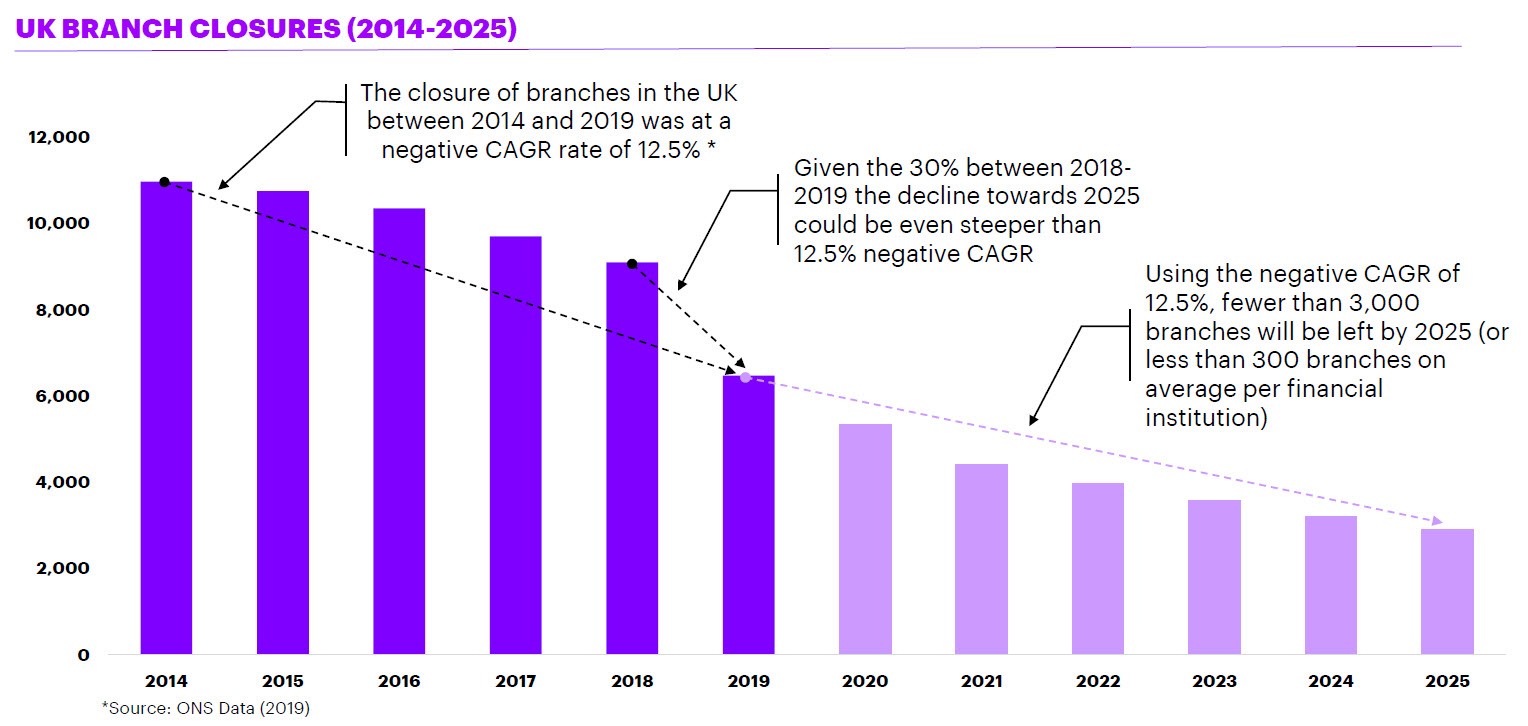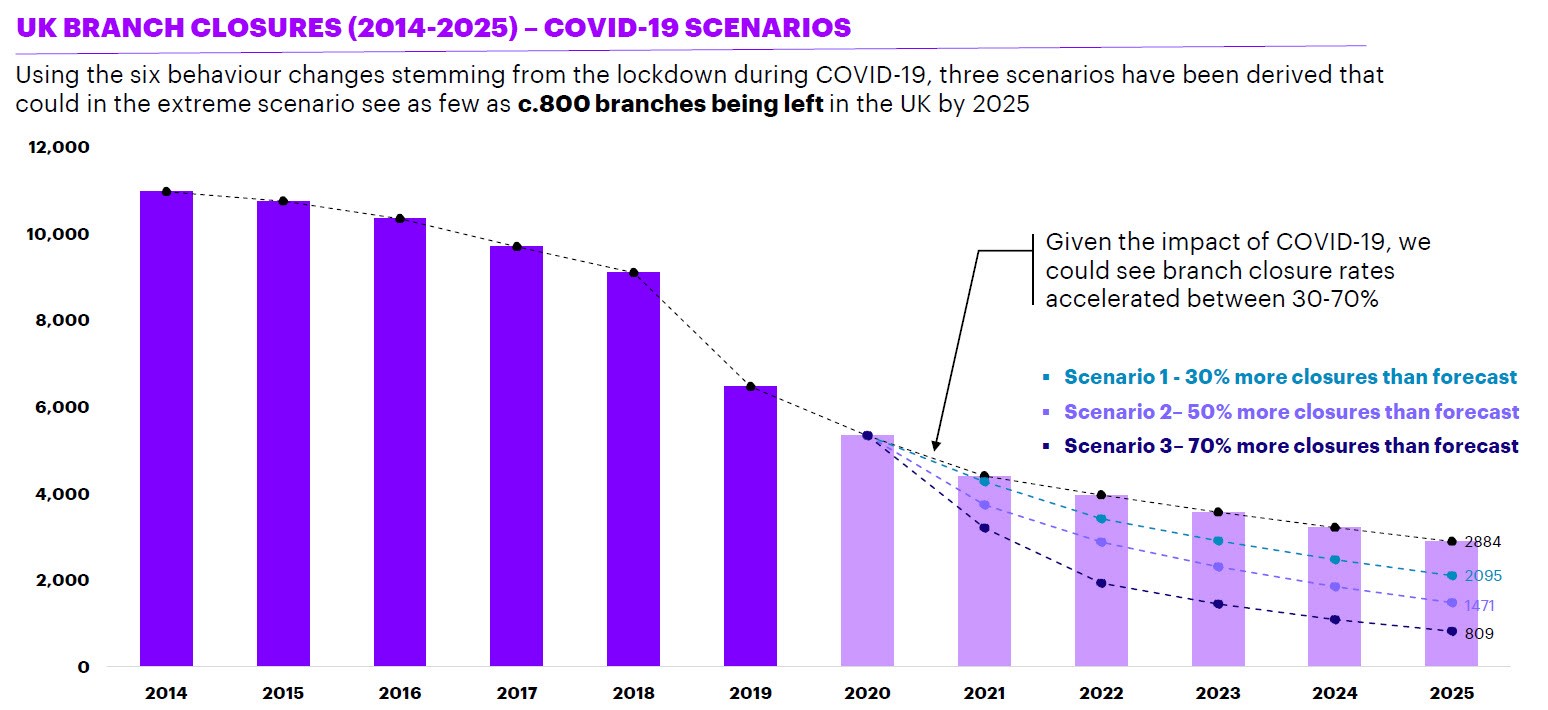Other parts of this series:
The rise in popularity of online banking in the last several years had already precipitated a downward trend in branch banking and had forced financial institutions to start adjusting their networks. The disruption caused by the global COVID-19 crisis did not cause the trend but has certainly accelerated it.
Though banks, building societies and credit unions were considered “essential services” and not required to close during the peak of the pandemic, many financial institutions responded by reducing hours, temporarily closing some branches and limiting visits to appointments.
COVID-19 also accelerated the shift to digital, with segments of the population adopting digital technologies and contactless payments faster than experts had predicted.
We identified six behaviour changes that started with the pandemic, and that we believe will influence the usage of branches when the crisis abates:
- Cash decline. During the shutdown period, there was a 60 percent decline in the number of withdrawals from cash machines. An overwhelming majority (76 percent) of respondents to a YouGov survey in the UK said they planned to use less cash post-COVID-19.
- e-Commerce adoption. Accenture research found that 25 percent of customers made their first online grocery purchase during the crisis. Surprisingly, 40 percent of those who did were aged 55 or older and 37 percent said they expected to continue purchasing online after the crisis.
- Online banking usage. In the US, a Mastercard survey found that 73 percent of customers were regularly transacting online. Just over a fifth of those (21 percent) were first-time users of online banking.
- Contactless usage. Two-thirds (66 percent) of all Mastercard transactions in the UK are now contactless. Mastercard also found that 76 percent of its customers plan to continue using contactless payments.
- Technology adoption. Video conferencing and other digital tools have become increasingly popular. In March, Microsoft recorded an increase of 12 million users on its group-collaboration platform, Microsoft Teams. According to Zoom, more than 300 million participants used its services daily in April 2020.
- Social distancing. The British Independent Retailers Association found that 20 percent of its members were not planning to reopen after lockdown measures are relaxed.
Here at Accenture, we’ve been tracking and analysing branch closures in the UK. We found that the branch footprint had been shrinking at a negative compound annual growth rate (CAGR) of 12.5 percent since 2014—from 10,960 branches in 2014 to 6,549 in 2019. At this rate, we expect there will be fewer than 3,000 branches left by 2025 or an average of fewer than 300 branches per financial institution.

When we overlay the impact of COVID-19 on our predictions, there are likely to be even fewer branches left in the UK, with scenarios ranging from approximately 800 to 2,000 by 2025.

While the decline of the traditional branch network is inevitable, it won’t totally disappear as it plays a pivotal role for financial institutions, with many processes still relying on branches.
In my next post, I’ll take a look at the four key roles of the branch network that will endure beyond COVID-19 and how those roles are likely to evolve.
In the meanwhile, I’d love to hear about how COVID-19 has impacted the branch network of your financial institution and what your plans for the post-pandemic era look like.











